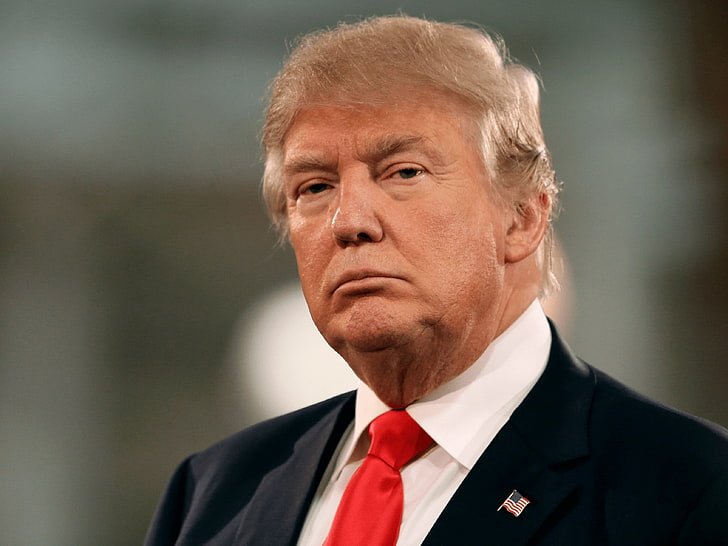Comprehensive Overhaul: Pakistan Approves New Fixed Gas Charges, Retains Tariffs for Major Sectors
ISLAMABAD, June 2025 – The federal government today announced sweeping changes to monthly fixed charges and tariff structures for domestic and bulk gas consumers—marking a significant shift in Pakistan’s energy pricing framework. Alongside fixed-charge adjustments, key industries and bulk power users will see tariff increases per MMBtu, while larger commercial and energy-intensive sectors remain unaffected. Here’s a detailed breakdown of these reforms, along with their broader implications.
1. Revised Fixed Charges for Domestic Consumers
Under the new policy, monthly fixed charges for gas consumption have been restructured to introduce progressive pricing tiers across different consumer categories:
-
Protected residential consumers will now evenly pay Rs 600 per month, up from Rs 400, a 50% hike aimed at accounting for rising infrastructure and distribution costs.
-
Non-protected consumers (those outside subsidy eligibility criteria) have also been tiered into two distinct categories:
-
Consumers using up to 1.5 hm³ of gas per month will face fixed charges of Rs 1,500, up by Rs 500 from the previous Rs 1,000.
-
Consumers using more than 1.5 hm³ will now pay Rs 3,000 per month, an increase of Rs 1,000 over the former fee of Rs 2,000.
-
All consumers, irrespective of category, will continue paying a meter rent of Rs 40 monthly. These adjustments reflect efforts to rationalize billing fairness while ensuring stable revenue for gas utilities.
2. Revised Gas Tariffs for Bulk Consumers and Industry
In addition to fixed charges, the government has adjusted per-unit gas tariffs for bulk power generation and key industrial segments:
-
Bulk consumers (typically large power stations and distribution networks) will now pay Rs 3,175 per MMBtu, up Rs 275 from the previous Rs 2,900.
-
Power sector generators (e.g., independent power producers, IPPs) will see their tariffs rise Rs 175, from Rs 1,050 to Rs 1,225 per MMBtu.
-
General industrial users (used for processing industries and manufacturers) will face a Rs 150 increase, raising the tariff from Rs 2,150 to Rs 2,300 per MMBtu.
3. Tariffs Unchanged for Critical Sectors
Despite these revisions, the government has maintained the status quo for other important sectors:
-
Captive power plants (energy generated for in-house use),
-
Cement industry,
-
Commercial buildings and enterprises,
-
Compressed Natural Gas (CNG) stations, and
-
Fertilizer producers.
These sectors will continue to pay their existing gas tariffs, preserving stability in industries pivotal to economic growth and national energy supply chains.
4. Rationale Behind the Revisions
Officials have cited several motivations for this recalibration:
-
Cross‑subsidization reduction: The increased fixed charges aim to lessen the financial burden on utilities that previously subsidized residential rates with revenues from bulk and industrial users.
-
Cost recovery: Elevated infrastructure and operational costs, including pipeline upkeep and gas import expenses, have placed pressure on maintaining a sustainable distribution network—especially given growing residential demand.
-
Consumption rationalization: Tiered increases disincentivize excessive home consumption, nudging consumers toward efficient usage without compromising access.
5. Financial Impact by Household Type
To illustrate the effect of these changes:
| Consumer Type | Fixed Charges Before | Fixed Charges After | Meter Rent | Monthly Increase (Rs/month) |
|---|---|---|---|---|
| Protected Consumers | Rs 400 | Rs 600 | Rs 40 | +Rs 200 |
| Non-Protected (≤1.5 hm³) | Rs 1,000 | Rs 1,500 | Rs 40 | +Rs 500 |
| Non-Protected (>1.5 hm³) | Rs 2,000 | Rs 3,000 | Rs 40 | +Rs 1,000 |
A basic household categorized as protected will see their fixed monthly payment rise 50%, while larger users may experience a doubling or even tripling effect compared to previous charges.
6. Implications for Bulk Power Sector Costs
Bulk and electricity-generation marketers will now incur higher input costs:
-
Rs 3,175 per MMBtu for bulk users suggests a 9.5% increase in gas costs for national power producers.
-
The power sector’s Rs 1,225 per MMBtu tariff reflects a moderate burden increase for electricity generation, with broad implications for tariffs and budgeting.
-
Industries paying Rs 2,300 per MMBtu may see a modest rise in operating expenses—a factor potentially affecting product pricing and competitiveness.
These adjustments could ripple through tariff settings and energy cost forecasts, although regulators and generators might delay passing costs fully to end-users.
7. Which Consumer Sectors Are Shielded?
Maintaining gas tariff stability in certain sectors underscores government priorities:
-
Cement and fertilizer industries are essential for construction and agriculture—core sectors in government policy.
-
CNG networks are critical for public transportation and low-income consumers.
-
Captive power plants relieve grid stress and reduce import dependency.
Continuity in these areas demonstrates a calibrated approach balancing cost recovery and strategic sector support.
8. Meter Rent: An Unchanged Component
The Rs 40 monthly meter rent, applied uniformly across all consumer categories, continues to fund the installation, maintenance, and replacement of gas metering equipment—critical to billing accuracy and detection of leakages.
9. Stakeholder Reactions and Public Response
Preliminary reactions from consumers and industry representatives have been mixed:
-
Consumer advocates warn the hikes may strain lower- and middle-income families, calling for installments or rebates.
-
Energy economists argue metro-area fixed charges remain disproportionately subsidized, and higher tariffs for bulk/industrial users reflect more equitable pricing.
-
Industry lobbyists representing unaffected sectors—like cement and fertilizer—view the stability of tariffs favorably, though some urge caution in future review cycles.
10. Comparative Outlook: Regional Gas Pricing
Pakistan’s revised gas costs now position it ahead of some regional peers in terms of:
-
Domestic residential pricing, which remains lower than in India and Bangladesh after subsidy adjustments.
-
Industrial gas tariffs, with the Rs 2,300 per MMBtu aligning with industry averages in neighboring countries, keeping export-oriented sectors steady.
-
Bulk electricity generation, although costs may temper power tariff reduction efforts pending further energy reforms.
11. Strategic and Political Considerations
This pricing decision has wider socio-political resonance:
-
The timing—aligning with tariff cycles—helps balance public cash flows and economic recovery plans.
-
Mandating hikes in selected segments keeps headline inflation lower while focusing increases on higher-usage categories.
-
By protecting major industrial sectors, the government preserves export competitiveness and avoids inflaming key industry groups.
12. Long-Term Projections and Energy Sector Impact
Depending on sector behavior, downstream effects may include:
-
Reduced domestic consumption: Higher fixed charges could encourage efficient usage or accelerated solar and electric cooking transitions.
-
Power tariff adjustments: Generators may raise power tariffs, making electricity costlier unless subsidies or regulatory delays intervene.
-
Revenue stability for utilities: Structured pricing supports capital investment in expanding, upgrading, and maintaining gas infrastructure across public and private networks.
13. Policy Synergies and Energy Transition
These pricing reforms align with broader national energy strategies:
-
Diversification focus: Higher gas costs for bulk consumers can tilt incentives toward renewables like solar and wind.
-
Smart metering investments: Given the unchanged meter rent, the state may pursue network losses reduction and theft prevention via IoT and digitization.
-
Gas‑to‑electricity linkage: As power plants absorb more of the tariff burden, there may be renewed calls for cross-sector subsidies, compensation, or efficiency measures.
14. What to Watch Going Forward
Key follow-up developments include:
-
FOCUS GROUPS & SURVEYS: Public acceptance and behavioral shifts in energy use may influence consumer protection policies or exemptions.
-
INDUSTRY BORROWING AND FINANCIAL MODELS: Businesses reliant on gas may hedge via efficiency investment or fuel switching strategies.
-
IPPs & TARIFF REVIEW: The National Electric Power Regulatory Authority (Nepra) may reassess electricity tariffs in response to input cost jumps.
-
BILLS & INFLATION: Watch for impacts on the Consumer Price Index (CPI) and the embedded effect in downstream inflation.
-
PROFITABILITY REPORTS: Discos and SNGPL may report improved margins funded by enhanced fixed-charge recovery.
15. Policy Transparency and Regulatory Oversight
To ensure accountability:
-
The Oil and Gas Regulatory Authority (OGRA) will closely monitor tariff implementation and consumer compliance.
-
Public hearings and forums will allow stakeholder grievances regarding misapplication or billing errors.
-
LPG import-price indexing may also come under scrutiny, given global market volatility.
16. Regional and Global Context
With evolving global energy dynamics:
-
Imported LNG prices have ranged from US $8–$12/MMBtu, making domestic pricing an outcome of government absorption, subsidy allocation, and rupee-dollar exchange rates.
-
Similar pricing adjustments in countries like India and Bangladesh provide reference points: their residential rates span Rs 500–1,200 per therm, with industrial rates much higher.
-
Pakistan’s new structure shows a strategic pivot toward letting market mechanisms balance affordability and energy-sector investment.
Summary of Key Adjustments
-
Fixed Charges – Domestic:
-
Protected: Rs 400 → Rs 600 (+Rs 200)
-
Non-protected (≤1.5 hm³): Rs 1,000 → Rs 1,500 (+Rs 500)
-
Non-protected (>1.5 hm³): Rs 2,000 → Rs 3,000 (+Rs 1,000)
-
-
Flat meter rent: Rs 40 unchanged
-
Bulk consumer tariff: Rs 2,900 → Rs 3,175 (+Rs 275/MmBtu)
-
Power sector tariff: Rs 1,050 → Rs 1,225 (+Rs 175/MmBtu)
-
General industry tariff: Rs 2,150 → Rs 2,300 (+Rs 150/MmBtu)
-
No change in captive power, cement, commercial, CNG, and fertilizer sectors
Final Thoughts
This comprehensive tariff realignment blends economic efficiency, social equity, and sector-specific protection. By lifting fixed charges and adjusting input tariffs selectively, the government aims to:
-
Enhance revenue stability for gas companies
-
Encourage conservation through cost signals
-
Shield vital industrial and energy generators
-
Maintain downward electricity tariff flexibility
Although public backlash may emerge—especially from urban households hit by higher monthly costs—these reforms position the energy sector for longer-term sustainability. As Pakistan embarks on greater fiscal discipline, infrastructure refurbishment, and renewable-energy transition, this pricing revision will be a core piece guiding future policy and investment strategies.
‘Kya 5-Minute ki Break Le Lein? Meri Namaz Qaza Ho jayegi’, CM Maryam Nawaz
Read This Article
Comprehensive Overhaul: Pakistan Approves New Fixed Gas Charges, Retains Tariffs for Major Sectors
ISLAMABAD, June 2025 – The federal government today announced sweeping changes to monthly fixed charges and tariff structures for domestic and bulk gas consumers—marking a significant shift in Pakistan’s energy pricing framework. Alongside fixed-charge adjustments, key industries and bulk power users will see tariff increases per MMBtu, while larger commercial and energy-intensive sectors remain unaffected. Here’s a detailed breakdown of these reforms, along with their broader implications.
1. Revised Fixed Charges for Domestic Consumers
Under the new policy, monthly fixed charges for gas consumption have been restructured to introduce progressive pricing tiers across different consumer categories:
-
Protected residential consumers will now evenly pay Rs 600 per month, up from Rs 400, a 50% hike aimed at accounting for rising infrastructure and distribution costs.
-
Non-protected consumers (those outside subsidy eligibility criteria) have also been tiered into two distinct categories:
-
Consumers using up to 1.5 hm³ of gas per month will face fixed charges of Rs 1,500, up by Rs 500 from the previous Rs 1,000.
-
Consumers using more than 1.5 hm³ will now pay Rs 3,000 per month, an increase of Rs 1,000 over the former fee of Rs 2,000.
-
All consumers, irrespective of category, will continue paying a meter rent of Rs 40 monthly. These adjustments reflect efforts to rationalize billing fairness while ensuring stable revenue for gas utilities.
2. Revised Gas Tariffs for Bulk Consumers and Industry
In addition to fixed charges, the government has adjusted per-unit gas tariffs for bulk power generation and key industrial segments:
-
Bulk consumers (typically large power stations and distribution networks) will now pay Rs 3,175 per MMBtu, up Rs 275 from the previous Rs 2,900.
-
Power sector generators (e.g., independent power producers, IPPs) will see their tariffs rise Rs 175, from Rs 1,050 to Rs 1,225 per MMBtu.
-
General industrial users (used for processing industries and manufacturers) will face a Rs 150 increase, raising the tariff from Rs 2,150 to Rs 2,300 per MMBtu.
3. Tariffs Unchanged for Critical Sectors
Despite these revisions, the government has maintained the status quo for other important sectors:
-
Captive power plants (energy generated for in-house use),
-
Cement industry,
-
Commercial buildings and enterprises,
-
Compressed Natural Gas (CNG) stations, and
-
Fertilizer producers.
These sectors will continue to pay their existing gas tariffs, preserving stability in industries pivotal to economic growth and national energy supply chains.
4. Rationale Behind the Revisions
Officials have cited several motivations for this recalibration:
-
Cross‑subsidization reduction: The increased fixed charges aim to lessen the financial burden on utilities that previously subsidized residential rates with revenues from bulk and industrial users.
-
Cost recovery: Elevated infrastructure and operational costs, including pipeline upkeep and gas import expenses, have placed pressure on maintaining a sustainable distribution network—especially given growing residential demand.
-
Consumption rationalization: Tiered increases disincentivize excessive home consumption, nudging consumers toward efficient usage without compromising access.
5. Financial Impact by Household Type
To illustrate the effect of these changes:
| Consumer Type | Fixed Charges Before | Fixed Charges After | Meter Rent | Monthly Increase (Rs/month) |
|---|---|---|---|---|
| Protected Consumers | Rs 400 | Rs 600 | Rs 40 | +Rs 200 |
| Non-Protected (≤1.5 hm³) | Rs 1,000 | Rs 1,500 | Rs 40 | +Rs 500 |
| Non-Protected (>1.5 hm³) | Rs 2,000 | Rs 3,000 | Rs 40 | +Rs 1,000 |
A basic household categorized as protected will see their fixed monthly payment rise 50%, while larger users may experience a doubling or even tripling effect compared to previous charges.
6. Implications for Bulk Power Sector Costs
Bulk and electricity-generation marketers will now incur higher input costs:
-
Rs 3,175 per MMBtu for bulk users suggests a 9.5% increase in gas costs for national power producers.
-
The power sector’s Rs 1,225 per MMBtu tariff reflects a moderate burden increase for electricity generation, with broad implications for tariffs and budgeting.
-
Industries paying Rs 2,300 per MMBtu may see a modest rise in operating expenses—a factor potentially affecting product pricing and competitiveness.
These adjustments could ripple through tariff settings and energy cost forecasts, although regulators and generators might delay passing costs fully to end-users.
7. Which Consumer Sectors Are Shielded?
Maintaining gas tariff stability in certain sectors underscores government priorities:
-
Cement and fertilizer industries are essential for construction and agriculture—core sectors in government policy.
-
CNG networks are critical for public transportation and low-income consumers.
-
Captive power plants relieve grid stress and reduce import dependency.
Continuity in these areas demonstrates a calibrated approach balancing cost recovery and strategic sector support.
8. Meter Rent: An Unchanged Component
The Rs 40 monthly meter rent, applied uniformly across all consumer categories, continues to fund the installation, maintenance, and replacement of gas metering equipment—critical to billing accuracy and detection of leakages.
9. Stakeholder Reactions and Public Response
Preliminary reactions from consumers and industry representatives have been mixed:
-
Consumer advocates warn the hikes may strain lower- and middle-income families, calling for installments or rebates.
-
Energy economists argue metro-area fixed charges remain disproportionately subsidized, and higher tariffs for bulk/industrial users reflect more equitable pricing.
-
Industry lobbyists representing unaffected sectors—like cement and fertilizer—view the stability of tariffs favorably, though some urge caution in future review cycles.
10. Comparative Outlook: Regional Gas Pricing
Pakistan’s revised gas costs now position it ahead of some regional peers in terms of:
-
Domestic residential pricing, which remains lower than in India and Bangladesh after subsidy adjustments.
-
Industrial gas tariffs, with the Rs 2,300 per MMBtu aligning with industry averages in neighboring countries, keeping export-oriented sectors steady.
-
Bulk electricity generation, although costs may temper power tariff reduction efforts pending further energy reforms.
11. Strategic and Political Considerations
This pricing decision has wider socio-political resonance:
-
The timing—aligning with tariff cycles—helps balance public cash flows and economic recovery plans.
-
Mandating hikes in selected segments keeps headline inflation lower while focusing increases on higher-usage categories.
-
By protecting major industrial sectors, the government preserves export competitiveness and avoids inflaming key industry groups.
12. Long-Term Projections and Energy Sector Impact
Depending on sector behavior, downstream effects may include:
-
Reduced domestic consumption: Higher fixed charges could encourage efficient usage or accelerated solar and electric cooking transitions.
-
Power tariff adjustments: Generators may raise power tariffs, making electricity costlier unless subsidies or regulatory delays intervene.
-
Revenue stability for utilities: Structured pricing supports capital investment in expanding, upgrading, and maintaining gas infrastructure across public and private networks.
13. Policy Synergies and Energy Transition
These pricing reforms align with broader national energy strategies:
-
Diversification focus: Higher gas costs for bulk consumers can tilt incentives toward renewables like solar and wind.
-
Smart metering investments: Given the unchanged meter rent, the state may pursue network losses reduction and theft prevention via IoT and digitization.
-
Gas‑to‑electricity linkage: As power plants absorb more of the tariff burden, there may be renewed calls for cross-sector subsidies, compensation, or efficiency measures.
14. What to Watch Going Forward
Key follow-up developments include:
-
FOCUS GROUPS & SURVEYS: Public acceptance and behavioral shifts in energy use may influence consumer protection policies or exemptions.
-
INDUSTRY BORROWING AND FINANCIAL MODELS: Businesses reliant on gas may hedge via efficiency investment or fuel switching strategies.
-
IPPs & TARIFF REVIEW: The National Electric Power Regulatory Authority (Nepra) may reassess electricity tariffs in response to input cost jumps.
-
BILLS & INFLATION: Watch for impacts on the Consumer Price Index (CPI) and the embedded effect in downstream inflation.
-
PROFITABILITY REPORTS: Discos and SNGPL may report improved margins funded by enhanced fixed-charge recovery.
15. Policy Transparency and Regulatory Oversight
To ensure accountability:
-
The Oil and Gas Regulatory Authority (OGRA) will closely monitor tariff implementation and consumer compliance.
-
Public hearings and forums will allow stakeholder grievances regarding misapplication or billing errors.
-
LPG import-price indexing may also come under scrutiny, given global market volatility.
16. Regional and Global Context
With evolving global energy dynamics:
-
Imported LNG prices have ranged from US $8–$12/MMBtu, making domestic pricing an outcome of government absorption, subsidy allocation, and rupee-dollar exchange rates.
-
Similar pricing adjustments in countries like India and Bangladesh provide reference points: their residential rates span Rs 500–1,200 per therm, with industrial rates much higher.
-
Pakistan’s new structure shows a strategic pivot toward letting market mechanisms balance affordability and energy-sector investment.
Summary of Key Adjustments
-
Fixed Charges – Domestic:
-
Protected: Rs 400 → Rs 600 (+Rs 200)
-
Non-protected (≤1.5 hm³): Rs 1,000 → Rs 1,500 (+Rs 500)
-
Non-protected (>1.5 hm³): Rs 2,000 → Rs 3,000 (+Rs 1,000)
-
-
Flat meter rent: Rs 40 unchanged
-
Bulk consumer tariff: Rs 2,900 → Rs 3,175 (+Rs 275/MmBtu)
-
Power sector tariff: Rs 1,050 → Rs 1,225 (+Rs 175/MmBtu)
-
General industry tariff: Rs 2,150 → Rs 2,300 (+Rs 150/MmBtu)
-
No change in captive power, cement, commercial, CNG, and fertilizer sectors
Final Thoughts
This comprehensive tariff realignment blends economic efficiency, social equity, and sector-specific protection. By lifting fixed charges and adjusting input tariffs selectively, the government aims to:
-
Enhance revenue stability for gas companies
-
Encourage conservation through cost signals
-
Shield vital industrial and energy generators
-
Maintain downward electricity tariff flexibility
Although public backlash may emerge—especially from urban households hit by higher monthly costs—these reforms position the energy sector for longer-term sustainability. As Pakistan embarks on greater fiscal discipline, infrastructure refurbishment, and renewable-energy transition, this pricing revision will be a core piece guiding future policy and investment strategies.




